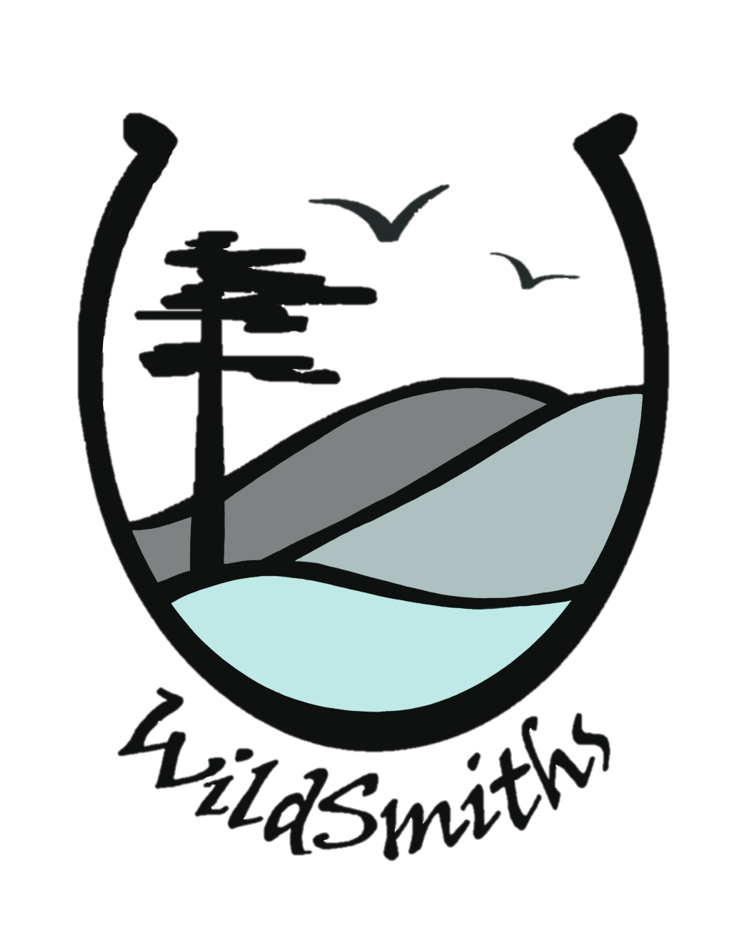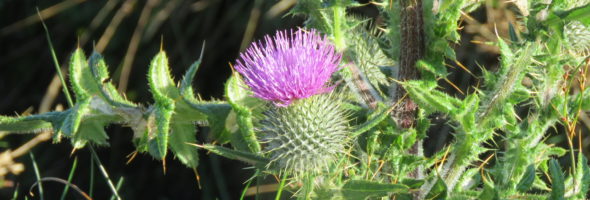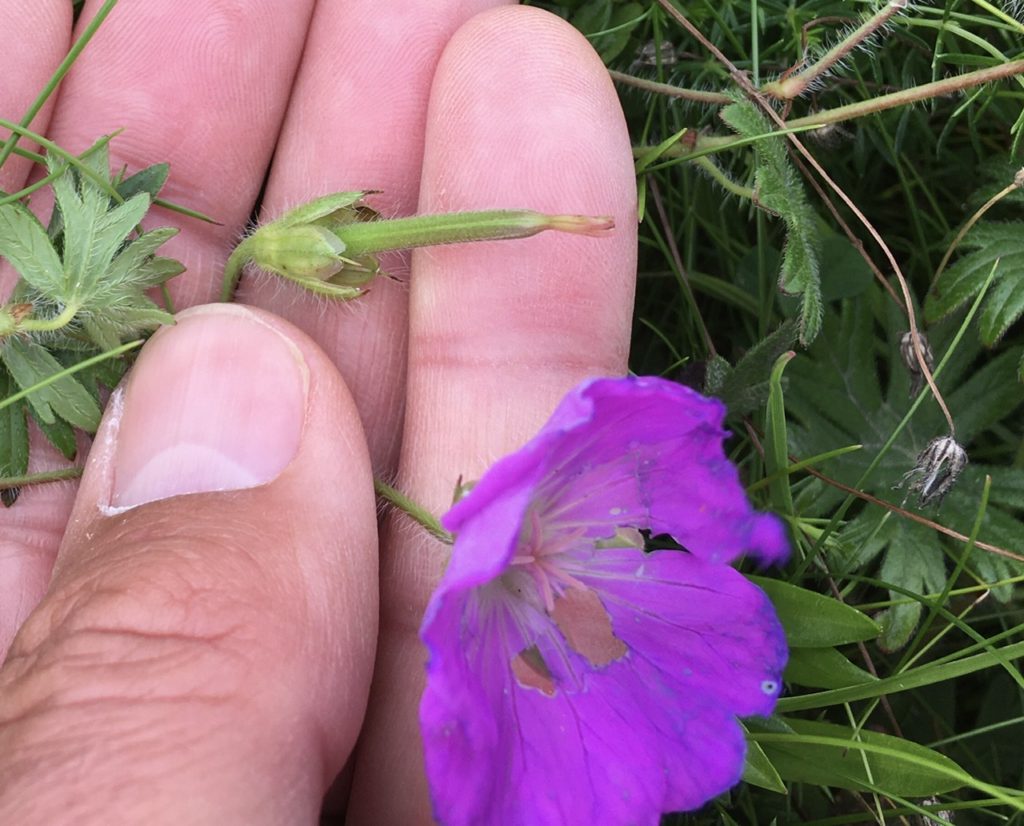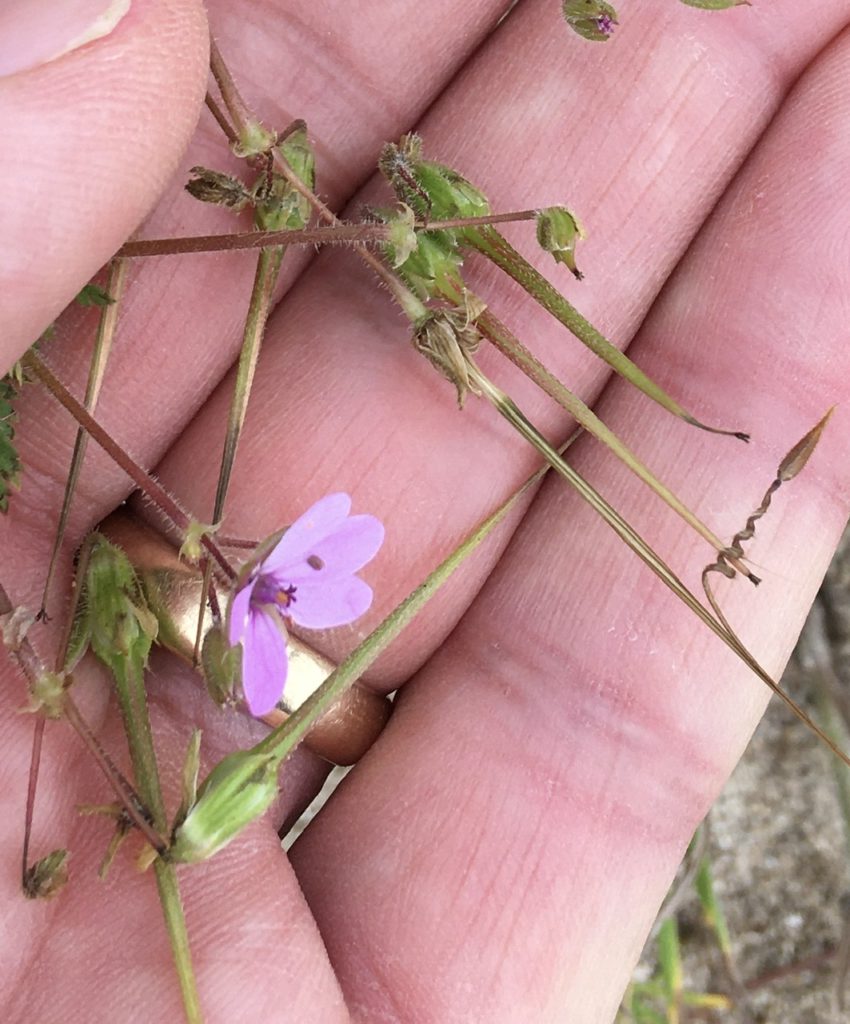A new route today for our Isle of Coll guided wildlife walks. Eight of us, wrapped up against the wind and rain, met at the RSPB car park at Crossapoll.
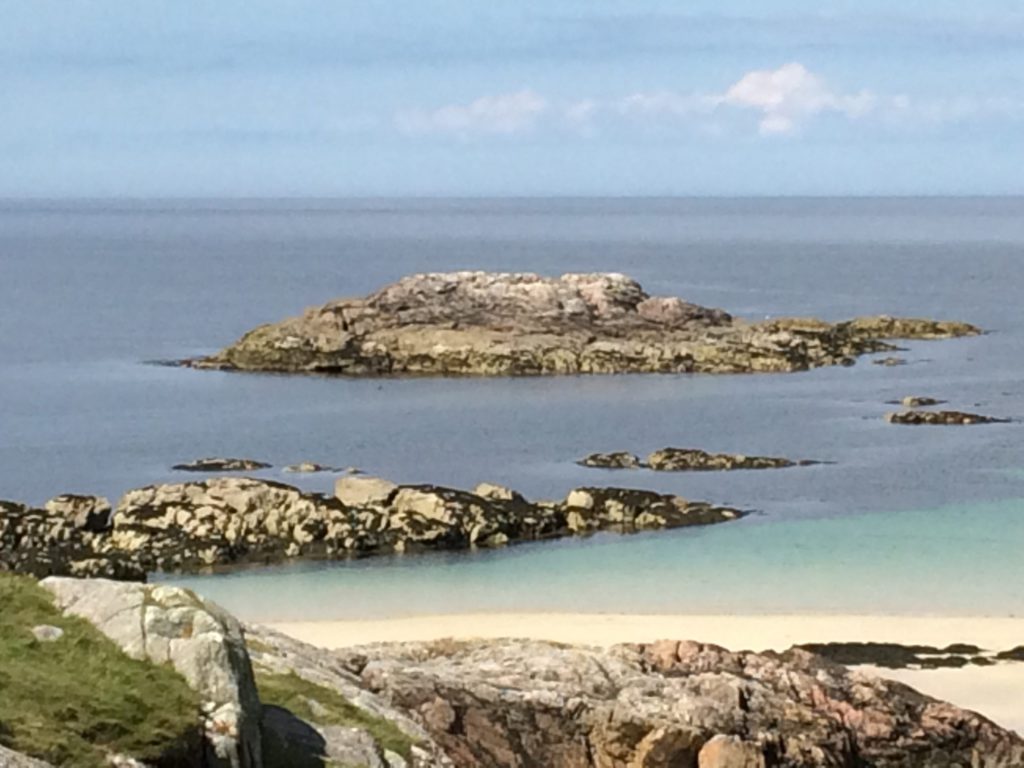
As we gathered, Greg was relaying the story of the previous evening’s dog-fight between a peregrine and a raven over the dunes. Suddenly, the pair reappeared to resume the encounter. On this occasion however, the raven had brought his mates and suddenly the sky was filled with ravens. The peregrine was undaunted, though, and shot back and forth among them. It wasn’t clear what the purpose of this interaction was, other than to establish aerial bragging rights, but it was a great spectacle to watch.
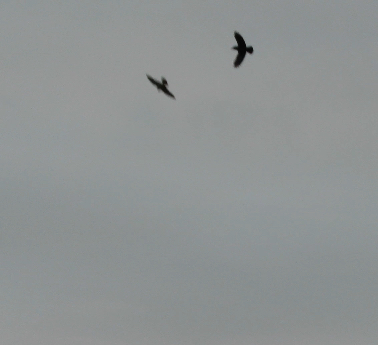
We then headed up into the dunes where, many years ago (so the story goes), sand lizards (one of Britain’s rarest reptiles) were introduced after being rescued from a development site on the south coast of England. The colony is still going strong, though it was understood to be restricted to these dunes. One of the locals in our group explained that she had recently seen “a bright green lizard” at her house a few miles away across the dunes – it sounds like they may be on the move…
We didn’t see any lizards on this occasion but we did find lots of Bloody Cranesbill – a relatively scarce plant in Scotland. Several of the plants had been parasitised by a tiny eriophyid mite Aceria geranii which produces a distinctive gall on the flowering stems. More accurately it is the plant that produces the gall in response to the presence of the mite eggs in the flower buds. Although undoubtedly under-recorded, this is a pretty rare beasty, so it was great to see evidence of so many of them as we walked thorough the dunes.
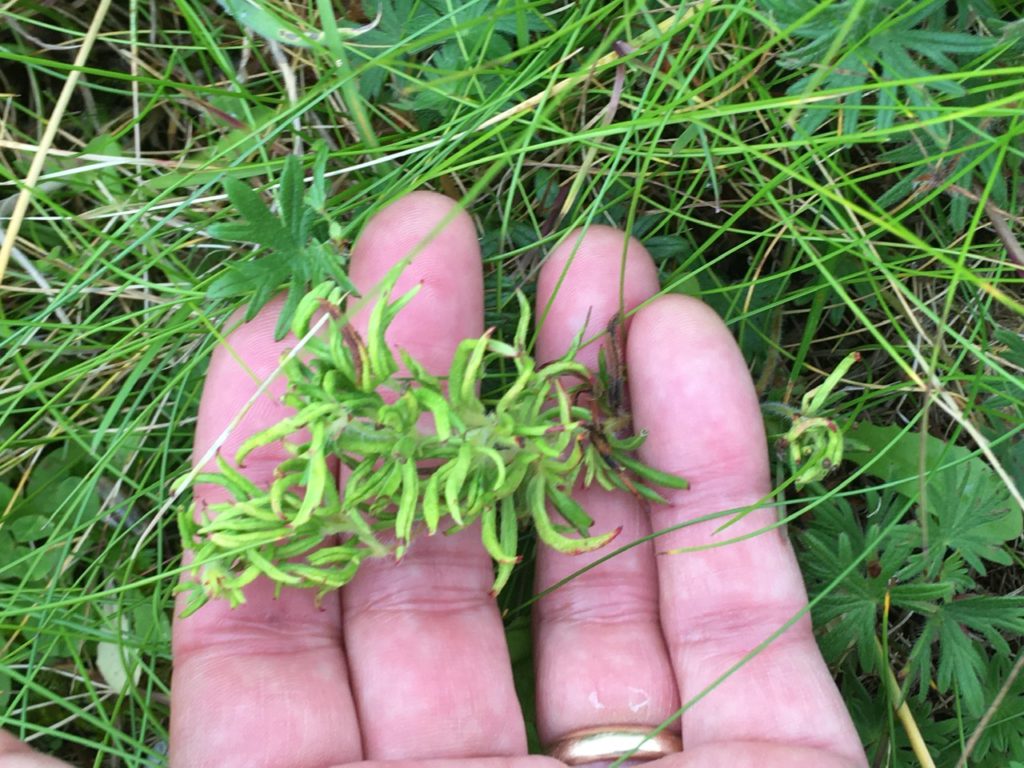
The cranesbill (left), and the closely related storksbill (right) which we saw a little later, both take their names from their characteristic seed pods. This got us wondering about the abundance of both cranes and storks in Britain in the Middle Ages – they must have been sufficiently familiar birds at that time for these names to have stuck.
It was great to see a colony of hole-nesting Sand Martins high in the exposed face of the blown-out dune, and again later on the low cliffs at the back of the beach. We’re so used to seeing these birds nesting in artificial situations, such as sand quarries, that it was good to be reminded of their ‘natural’ habitat.
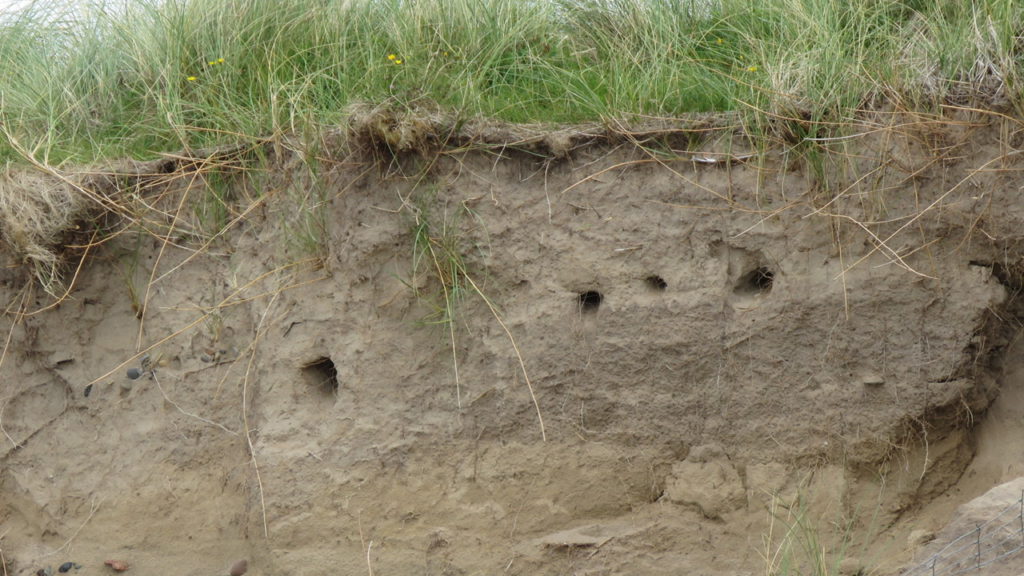
On the beach we were greeted by the sight, and smell, of a dead Grey Seal. Looking at the outline of the creature nestled in the sand, with its bones all in situ, it was easy to see how fossils come to be formed. A big storm dumping sand on top of the corpse would be enough to bury and protect it while the fossilisation process got to work.
We discussed the importance of the various bays around Coll and their role during stormy weather in providing shelter for sea birds. We saw Razorbills, Eider duck and even some Mallards on the relatively calm sea while the wind buffeted us.
The crumbling MacLean mausoleum on the sand dunes provided us with a salutary lesson of what happens when you build metaphorical castles on sand. But the cracked and leaning walls are a part of Coll’s built and cultural heritage and do not deserve to fall into ignominy.
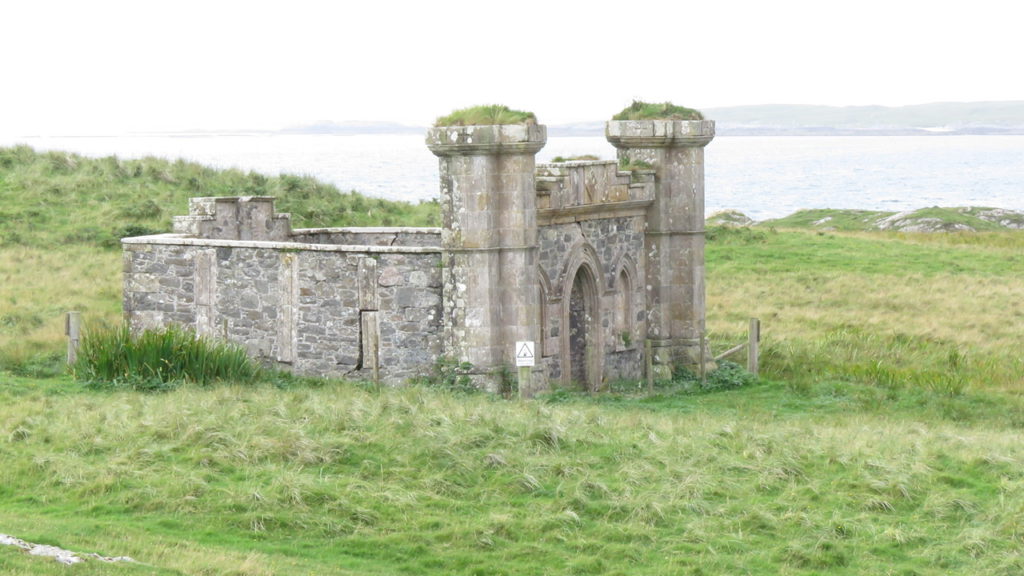
Another brief digression got us wondering what had caused the round, green protuberances on elevated rocks along the coast: fairies, trolls carbuncles, otters or people? We never reached a consensus but the discussion was fun!
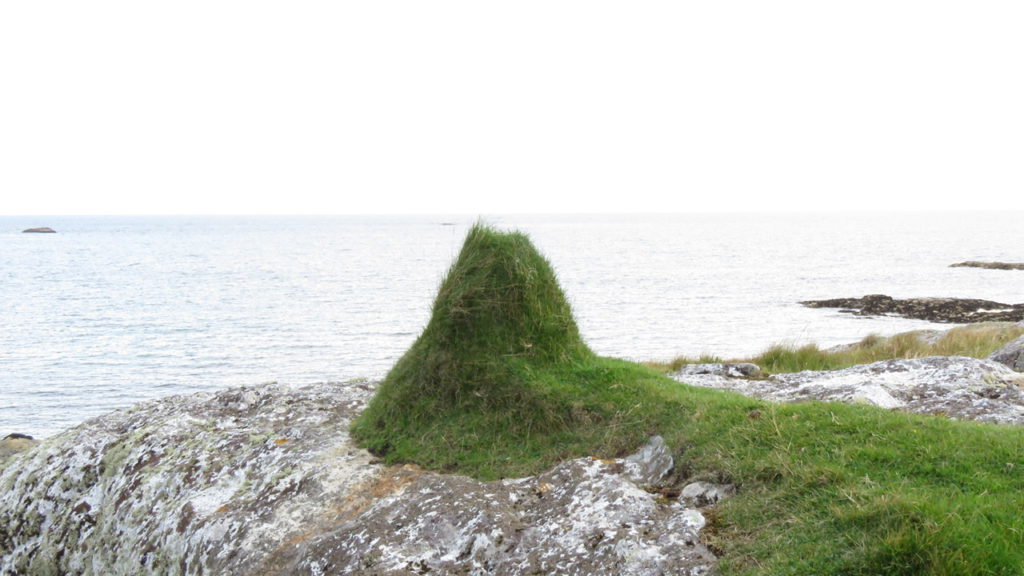
Finally as we returned to our starting point, with the rain still unabated, we looked at the intensive management of the farm fields, in partnership between local farmers and the RSPB This work is designed to create the perfect conditions for corncrakes and wintering geese, but also at this time of year enjoyed by curlew and large flocks of finches (including linnet, twite and greenfinch).
This triggered a discussion about the importance of such targeted management to support very rare species (like Coll’s corncrakes which represent around 15% of the entire UK population). At the other end of the spectrum, there is also a role for a more naturalistic approach, creating conditions for natural processes to operate at scale, minimising the need for human intervention, so-called ‘rewilding’. The Scottish countryside undoubtedly needs both!
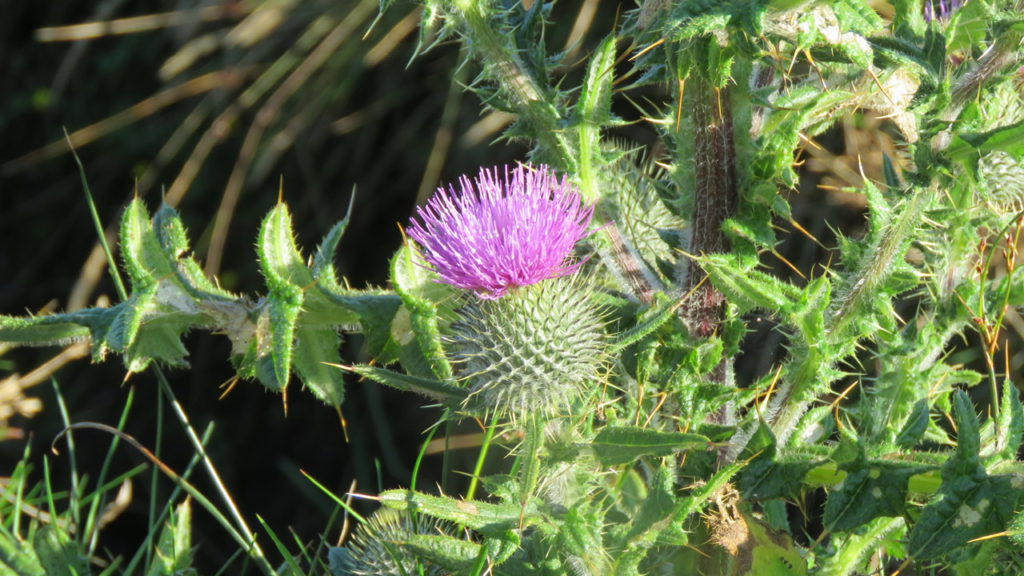
They say that Socrates used to walk regularly with his pupils so that the natural world might inspire their thinking. And so it was for us, a lovely walk with a great mix of natural history and philosophy!
WildSmiths
August 2020
